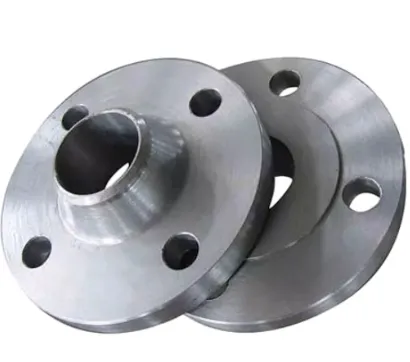-
Cangzhou Yulong Steel Co., Ltd.
-
Phone:
+86 13303177267 -
Email:
admin@ylsteelfittings.com
- English
- Arabic
- Italian
- Spanish
- Portuguese
- German
- kazakh
- Persian
- Greek
- French
- Russian
- Polish
- Thai
- Indonesian
- Vietnamese
- Zulu
- Korean
- Uzbek
- Hindi
- Serbian
- Malay
- Ukrainian
- Gujarati
- Haitian Creole
- hausa
- hawaiian
- Hebrew
- Miao
- Hungarian
- Icelandic
- igbo
- irish
- Japanese
- Javanese
- Kannada
- Khmer
- Rwandese
- Afrikaans
- Albanian
- Amharic
- Armenian
- Azerbaijani
- Basque
- Belarusian
- Bengali
- Bosnian
- Bulgarian
- Catalan
- Cebuano
- China
- China (Taiwan)
- Corsican
- Croatian
- Czech
- Danish
- Esperanto
- Estonian
- Finnish
- Frisian
- Galician
- Georgian
- Kurdish
- Kyrgyz
- Lao
- Latin
- Latvian
- Lithuanian
- Luxembourgish
- Macedonian
- Malgashi
- Malayalam
- Maltese
- Maori
- Marathi
- Mongolian
- Myanmar
- Nepali
- Norwegian
- Norwegian
- Occitan
- Pashto
- Dutch
- Punjabi
- Romanian
- Samoan
- Scottish Gaelic
- Sesotho
- Shona
- Sindhi
- Sinhala
- Slovak
- Slovenian
- Somali
- Sundanese
- Swahili
- Swedish
- Tagalog
- Tajik
- Tamil
- Tatar
- Telugu
- Turkish
- Turkmen
- Urdu
- Uighur
- Welsh
- Bantu
- Yiddish
- Yoruba

Nov . 18, 2024 16:53 Back to list
BS Flange VS ASME Flange
In the world of piping and industrial systems, various types of flanges play a crucial role in the management and connection of various components. Among the many standards available, the BS Flange and ASME Flange are two of the most recognized. Both standards serve the same fundamental purpose but differ significantly in their specifications and applications. In this blog post, we will delve into the differences between BS Flange and ASME Flange, illuminating their unique characteristics and advantages.
What is a BS Flange?
BS Flanges refer to flanges designed following British Standard specifications. The British Standards Institution (BSI) established these standards to ensure consistency and quality in manufacturing. BS Flanges are often used in various industries across the UK and Europe, providing reliable jointing for piping systems. Some of the key characteristics of BS Flanges include:
- Material Compatibility: BS Flanges are compatible with various materials, including carbon steel, stainless steel, and alloy steel. This versatility makes them suitable for a wide array of applications.
- Size and Thickness: BS Flanges are available in different nominal sizes and thicknesses, catering to diverse pressure ratings. This allows engineers to select the appropriate flange to meet their specific requirements.
- Standardization: The BS standard ensures a high level of uniformity, making it easier to replace or interchange components within a system.
What is an ASME Flange?
On the other hand, ASME Flanges are designed in accordance with the standards set forth by the American Society of Mechanical Engineers (ASME). These flanges are primarily used in North America and are known for their high quality and safety standards. Key aspects of ASME Flanges include:
- Widespread Use: ASME Flanges are widely accepted across industries in the United States, making them a standard choice for many engineering projects.
- Pressure Classifications: ASME Flanges come in various pressure classifications, ranging from Class 150 to Class 2500, allowing engineers to select flanges that can withstand specific pressure requirements.
- Design Flexibility: The ASME specifications provide detailed guidelines on the design, manufacturing, and testing of flanges, offering greater flexibility and reliability in applications where safety is paramount.
Key Differences Between BS Flange and ASME Flange
1. Standard Authority: The primary difference between BS Flange and ASME Flange lies in their governing organizations. BS Flanges are regulated by the British Standards Institution, while ASME Flanges adhere to guidelines set by the American Society of Mechanical Engineers.
2. Geographical Preference: BS Flanges are generally favored in Europe and the UK, whereas ASME Flanges are more commonly used in North America. This geographical preference can impact availability and accessibility for industries relying on these standards.
3. Pressure and Temperature Ratings: ASME Flanges typically have a wider range of pressure classifications compared to BS Flanges, which may limit their applicability in high-pressure systems.
4. Flange Dimensions: The dimensional standards for BS Flanges and ASME Flanges can differ, affecting the compatibility between systems that utilize these two types of flanges.
In conclusion, the choice between BS Flange and ASME Flange depends on the specific requirements of your piping system and geographical considerations. Understanding the differences between these two flange types is essential for engineers and project managers involved in the design and implementation of industrial systems. By carefully selecting the appropriate flange type for your project, you can ensure optimal performance, safety, and reliability.
When looking for flanges for your systems, consider BS Flanges for European applications and ASME Flanges for American projects. Both have their strengths, and the right choice can significantly impact the efficacy of your piping system.

Latest news
-
ANSI 150P SS304 SO FLANGE
NewsFeb.14,2025
-
ASTM A333GR6 STEEL PIPE
NewsJan.20,2025
-
ANSI B16.5 WELDING NECK FLANGE
NewsJan.15,2026
-
ANSI B16.5 SLIP-ON FLANGE
NewsApr.19,2024
-
SABS 1123 FLANGE
NewsJan.15,2025
-
DIN86044 PLATE FLANGE
NewsApr.19,2024
-
DIN2527 BLIND FLANGE
NewsApr.12,2024
-
JIS B2311 Butt-Welding Fittings LR/SR 45°/90° /180°Seamless/Weld
NewsApr.23,2024











